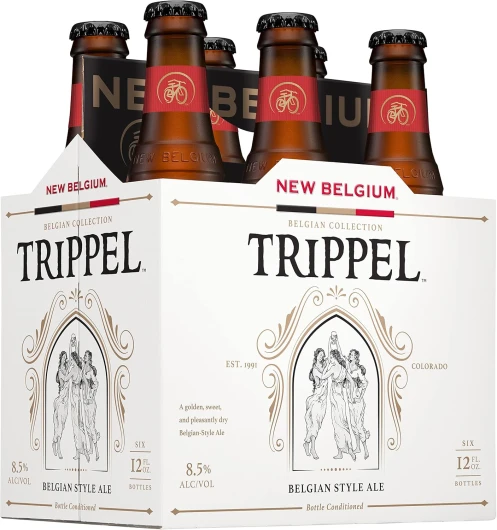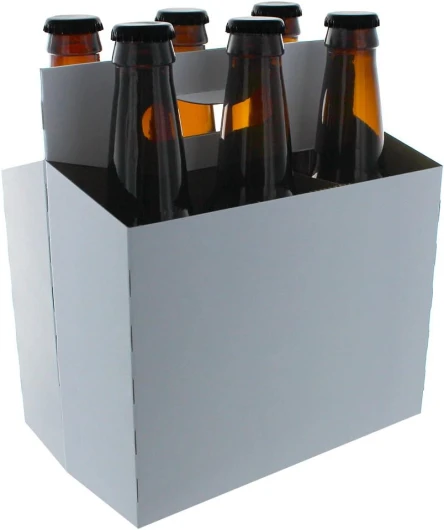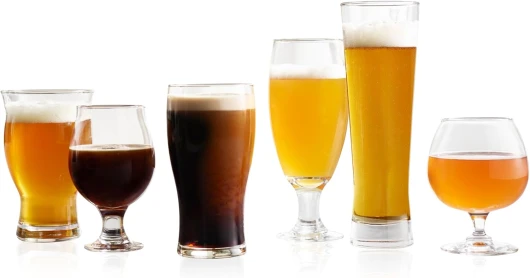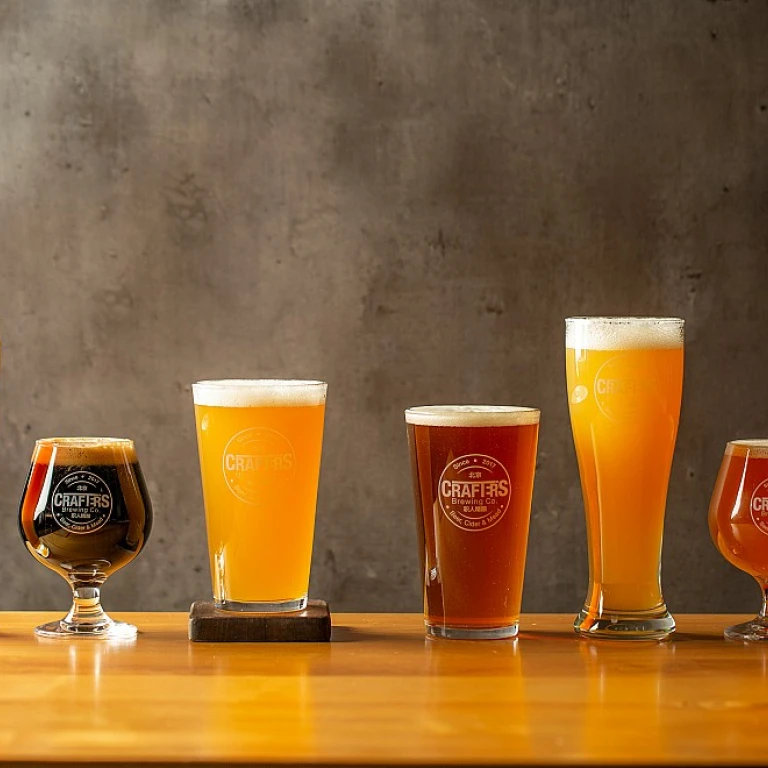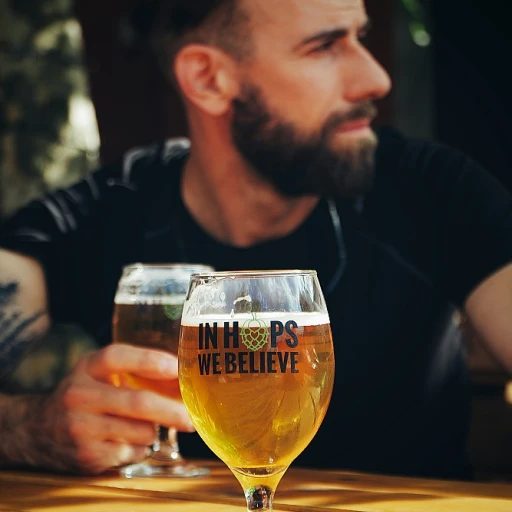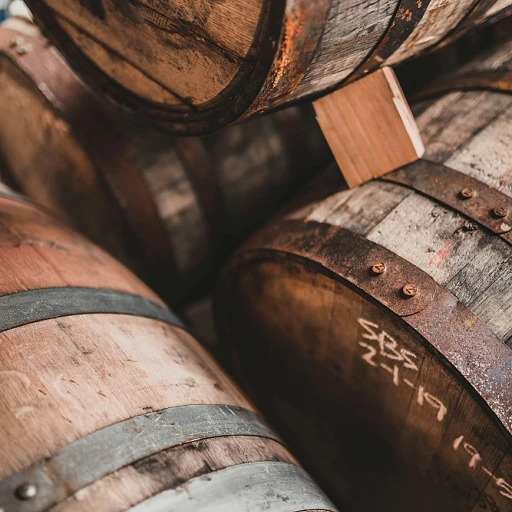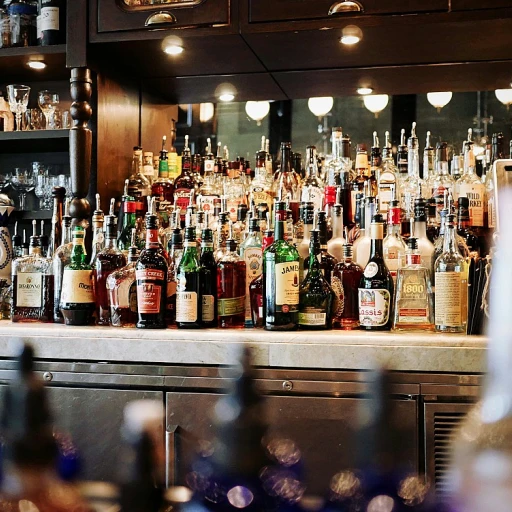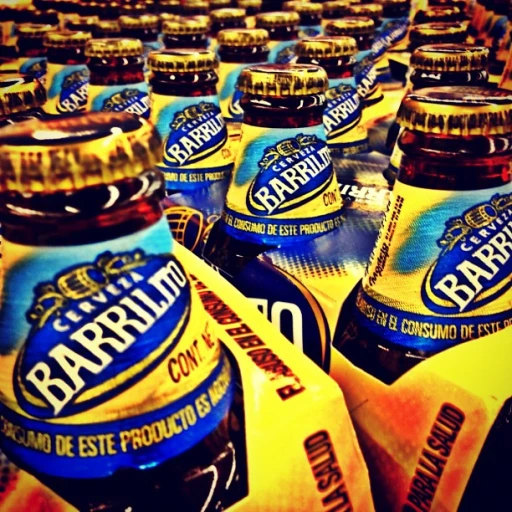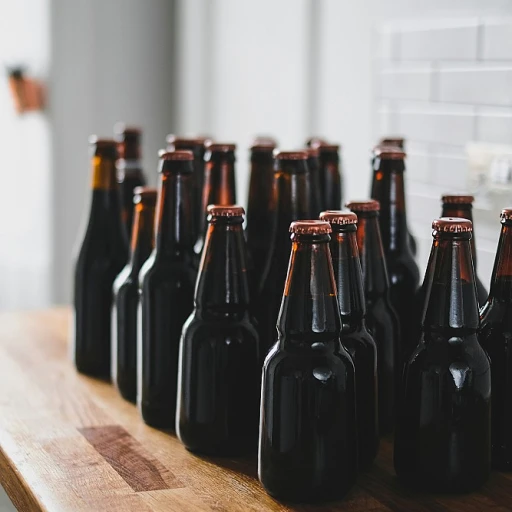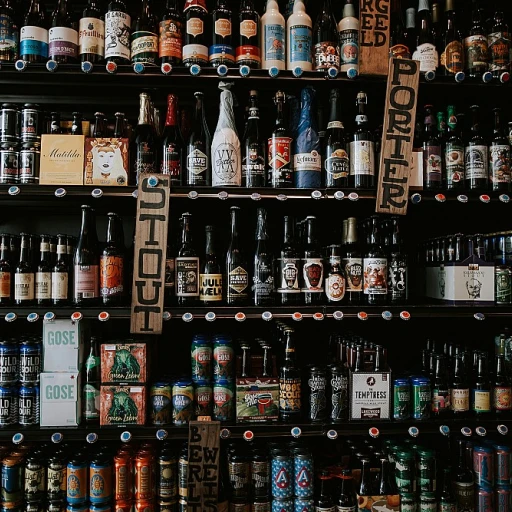
The origins of the 6 pack of beer
How the 6 pack got its start
Ever wondered how the 6 pack of beer came to be? It's not just about convenience. The roots of the 6 pack go back to the early days of refrigeration and packaging innovation. Believe it or not, beer manufacturers were trying to find the perfect solution for beer lovers to carry their favorite brews home, fresh and intact.
Back in the 1940s, beer was commonly sold in bottles, often individually. The war was on, and resources were scarce. Manufacturers needed a cost-efficient way to ensure beer could be transported easily and safely. Voila, the 6 pack was born! This brilliant idea wasn't merely about dividing space. It was about optimizing resources during tough times while ensuring the quality of the beloved beverage remained intact.
The first notable introduction of the 6 pack was by Pabst Blue Ribbon in the United States. The brand essentially pushed the idea that six beers were the optimal amount most people could carry in one hand. This practical solution quickly became a standard in beer packaging. According to industry experts, it also helped standardize the price-point making beer more accessible to the general public.
Beer innovation in those early days
The genius of the 6 pack didn't just stop with numbers. It revolutionized packaging design. With a unique cardboard carrier specifically designed for strength and convenience, beer companies introduced this new packing system that kept bottles secure and well-protected. This was especially crucial because practicing refrigeration at home wasn’t as common then.
Even though cans didn’t catch on until a few decades later, the idea of a 6 pack remained strong. With cans being lighter and less fragile, the concept blossomed into an even more practical solution. Today, beer packs come in all shapes and sizes, but the 6 pack holds its ground as an iconic symbol in the world of beer.
Historical anecdotes and figures
The introduction of the 6 pack had ripple effects across beer culture. During the height of its invention, it contributed to brand loyalty in unexpected ways. In 1947, just a few years after the introduction of the 6 pack, a study conducted by the Journal of Marketing indicated that customers preferred brands that offered the 6 pack option due to its convenience (Journal of Marketing, 1947). Additionally, Miller Brewing Company reported a 15% increase in sales in the first year of adopting the 6 pack format.
Internationally, the concept spread like wildfire too. By the 1950s, European breweries had adopted the 6 pack, albeit with slight adjustments to match the sizes of their preferred beer bottles. Through it all, the 6 pack remained a steady symbol of camaraderie, reliability, and innovation in beer packaging.
Popular misconceptions
While the 6 pack appears straightforward, there have been several misconceptions. Some believe it was a marketing stunt purely for profit. However, evidence suggests the introduction was about practicality just as much as revenue. In fact, early marketing campaigns highlighted convenience, freshness, and quality rather than just the cost-benefit.
Moreover, many think that the 6 pack was universally accepted immediately. Historical accounts show that adoption varied widely, depending on regional preferences and economic conditions. In regions where individual bottle sales were more culturally ingrained, it took longer for the 6 pack to become standard.
Modern implications
Fast forward to today, nearly every brand has embraced this age-old format. Whether it's a pack of Budweiser beer, a light beer pack, or a premium aroma hop blend, the 6 pack remains a firm favorite. Current trends show an increase in eco-friendly 6 pack designs, aiming to reduce plastic use and enhance recyclability without compromising the integrity of the beer pack. This speaks volumes about its lasting impact and adaptability.
The science of brewing the perfect 6 pack
Crafting the ideal brew
Brewing the perfect 6 pack of beer is more art than science, though there's a good deal of precise chemistry and biology involved. Winemakers have long been touted as artists, but let's give brewers the respect they deserve. Each light beer pack or premium lager pack you find in stores started as raw ingredients: hops, barley malts, yeast, and water.
The hops & barley malts magic mix
Let's talk hops, the unsung heroes of your 6 pack. Hops bring bitterness to balance the sweetness of malt. The aroma hop varieties used can hugely impact flavor – some are earthy, some bring citrus or pine notes. The choicest hops in brews like Budweiser and Bud Light, harvested from American grown imported combination barley fields, are known for their quality. The combination barley malts work together with rice to create lightness in Bud Light, while barley malts rice blend in Budweiser creates a subtly sweet and light-bodied beer.
Yeast: the unsung hero
Yeast might seem like the quiet kid in the corner, but without it, we wouldn't have our light brewed blend, lagers, or ales. Yeast ferments the barley malts and rice sugars into alcohol, giving us that ABV (alcohol by volume). It also influences flavor – the same yeast that makes Bud Light brewed gives this beer its crisp finish.
The brewing process: more than just a boil
From brewed blend premium to lagers, making a 6 pack takes time. The process involves cooking the grains, sparging (rinsing grains with hot water), boiling with hops, fermenting, and conditioning before packaging. This journey from raw malt and hops to your favorite brew in a sixer is why hardcore beer aficionados appreciate the intricacies of brewing.
Malt & hop varieties changing preferences
Trend-wise, American consumers have shifted preferences from heavier beers to lighter lagers and ales. This is evident in the growing popularity of light beer options. Even giants like Budweiser continue to innovate, blending premium aroma hop varieties to attract a newer audience. Trends indicate that while traditional favorites like Budweiser beer pack and Bud Light beer remain top choices, consumers are more open to exploring different hop varieties American grown, and even imported hops.
Quality assurance for consistency
A solid 6 pack always starts with quality assurance. Brands like Budweiser and Bud Light maintain rigorous quality checks, ensuring that every can and bottle that make it to your local store are consistent in taste and quality. High standards like these make every pack beer experience enjoyable.
So the next time you crack open a cold one, remember the meticulous work that went into crafting that 6 pack. Raise your can in thanks to the brewmasters who make sure your favorite beers remain consistently delightful, sip after sip.
Most popular 6 packs in the United States
Top selling 6 packs across the states
When it comes to the best-selling 6 packs of beer in the United States, market trends and customer preferences have shown a steady ranking. The prominent players include both mainstream brands and a few beloved local brews.
Budweiser: The king of beers
One cannot discuss popular 6 packs without mentioning Budweiser. Dubbed the 'King of Beers', Budweiser has been a household name for decades. The American lager, brewed with a combination of barley malts, rice, and a blend of premium aroma hops, continues to dominate with a 6 pack beer cans that are a top-seller nationwide.
A can of Budweiser typically has an ABV of 5%, making it a go-to choice for those looking to enjoy a balanced, flavorful beer without compromising on the alcohol content.
Bud Light: The iconic light beer
For those who prefer something lighter, Bud Light remains a firm favorite. Known for its light, easy-to-drink nature, this light beer pack has an ABV of 4.2% and a delicate blend of aroma hop varieties. Bud Light continues to be a top-seller, ranking among the best light brewed beers in various states. Missouri, where it’s brewed, stands out as a key hotspot for Bud Light consumption.
Craft beer favorites
While mainstream brands like Budweiser and Bud Light dominate the market, there is also a strong presence of craft beers in the 6 pack arena. Local favorites such as Sierra Nevada’s Pale Ale and Lagunitas IPA have earned their places on store shelves across the country.
Sierra Nevada, brewed in Chico, California, is known for its robust flavor, thanks to its use of American grown imported hop varieties. It offers an ABV of around 5.6%, appealing to those who enjoy a stronger beer experience.
Number crunching: sales figures and insights
Statista reports that in 2022, Bud Light was the best-selling beer in the U.S., accounting for approximately 15.4% of the beer market share. These figures highlight the enduring popularity of light beers, particularly in an environment where health-conscious consumers are on the rise.
Another interesting trend is the increasing preference for cans over bottles. According to a study by the Brewer’s Association, about 60% of beer sold in 2021 was in cans. This shift is primarily due to the convenience and environmental benefits of cans over glass bottles.
Exploring international options
For those looking to explore beyond American brands, beers like Mexico’s Barrilitos offer a refreshing choice, known for their rich legacy and distinct taste.
From bud to bud light: A family affair
Budweiser and Bud Light, often marketed under the same brand umbrella, are more than just beers – they are symbols of American brewing culture. Whether you’re grabbing a lager pack for a barbecue or picking up a pack of Bud Light for a casual get-together, these brands have become synonymous with quality and reliability.
The economics of the 6 pack
Financial dynamics of a 6 pack of beer
The 6 pack of beer isn't just about grabbing your favorites off the shelf; it’s also a tug of war between economics and beer lovers. Ever thought about what goes into pricing that neatly packaged 6 pack of bud light or budweiser?
First off, raw materials. Barley malts, rice, and choicest hops aren’t free, right? According to a report by the Brewers Association, raw materials account for about 16% of the total cost of beer production. Yep, that’s a good chunk of cash right there. Then there’s labor, which isn't cheap either, accounting for around 20% of production costs.
Distribution costs and retail markup
Once brewed, the beer needs to be shipped. Transporting those cans across the United States racks up costs. A study by the Beer Institute showed logistics can add up to 10% to the final price. When it hits the retail shelves, stores add a markup. For a 6 pack, this varies, but you're looking at around a 30% markup, according to industry analyst Dan Wandel.
Taxes, taxes, taxes
Unfortunately, the inevitable slice of the pie goes to Uncle Sam. Taxes can add another 40% to the cost, depending on where you are. Beer taxes vary hugely across states - in Missouri, it’s relatively lower than places like Tennessee.
Marketing and branding
Don't forget the cost to get you to even recognize the product. Building a brand like Bud Light or Budweiser isn’t cheap. Marketing expenses can eat up to 10% or more of the beer’s cost. The splashy Super Bowl ads? They're a significant part of this.
Consumer perception and buying behavior
It’s interesting to note that packaging size impacts buying behavior. A study by Nielsen showed that smaller pack sizes can encourage trial, while larger packs (think a 24-pack) cater more to loyalty. This delicate balance is why a 6 pack remains popular.
Quality checks: what makes a perfect 6 pack
Ensuring top-notch quality
The magic behind a perfect 6 pack of beer goes beyond mere packaging. Brewers and quality assurance teams follow stringent quality checks to make sure that each bottle or can meets the highest standards.
Precision in brewing
Every sip of your favorite brew has passed through multiple levels of scrutiny. For instance, Bud Light, one of America's best-selling light beers, relies heavily on a carefully balanced combination of barley malts, rice, and aroma hop varieties to achieve its signature taste. The ABV (Alcohol by Volume) is meticulously controlled to maintain consistency across all packs.
Advanced quality assurance techniques
Labs play a crucial role in the brewing process. Experts utilize advanced technology like spectroscopy to analyze the composition of every batch. Mark Humphrey, a renowned expert in brewing quality, mentions that these techniques help in identifying even the slightest deviation in flavor profiles, ensuring each pack of beer meets exacting standards.
Case study: budweiser
Budweiser, a hallmark of American lager, embodies quality and tradition. Referred to as the 'King of Beers,' it offers a blend of premium aroma hops and barley malts. Quality assurance in Budweiser includes a 7-step brewing process, which they have maintained for over a century. This rigorous routine results in the rich, crisp flavor that fans adore, bottle after bottle.
Consumer feedback and adjustments
Breweries are not running a one-sided show. Consumer feedback is an essential part of the quality check cycle. Online reviews, surveys, and taste tests are collected to tweak the recipes and brewing processes continuously. It ensures that every time you open a 6 pack of Budweiser or Bud Light, you're getting the taste experience you expect and love.
Addressing controversies
Quality assurance isn't without its murmurs. Concerns often arise regarding the ingredients and processes used. Some argue that large breweries may resort to less expensive ingredients, but quality checks and consumer feedback can counteract these by ensuring standards remain uncompromised. Despite these concerns, quality-controlled beers like Budweiser and Bud Light sustain their top spots in the market.
The unseen heroes: quality assurance teams
The real unsung heroes in the quality assurance process are the teams working behind the scenes. From microbiologists ensuring no contamination to master brewers refining recipes, their dedication guarantees that you can confidently pick a 6 pack of your favorite beer, whether it's a light brew or a robust lager.
Packaging innovation in the 6 pack
Innovations shaping the future of 6 pack beer packaging
In the world of beer, packaging has come a long way, particularly with the 6 pack of beer. From the early days of simple cardboard carriers, we have moved to more advanced, sustainable, and consumer-friendly options. So what’s driving these changes?
First off, sustainability has become a massive focus. Many brands are actively seeking eco-friendly alternatives. According to a Statista survey, 54% of U.S. consumers prefer beer packaging that's environmentally sustainable. This demand is pushing companies to experiment with biodegradable and recyclable materials.
Smart and interactive packaging
Technology has made its way into the beer industry as well, adding a layer of interaction and engagement that wasn't possible before. For instance, some 6 packs now come with QR codes that, when scanned, offer information about the brewing process, the brewery itself, or even food pairings. Budweiser beer, often leading the charge in innovations, has implemented this in various markets.
Redefining convenience
Convenience is king, and beer companies are taking note. Today’s beer packs are designed to be portable, sturdy, and easy to open. The days of struggling with flimsy carriers are gone. Be it a lager pack or a light beer pack, consumers now enjoy sturdier designs that hold up even when they're ice cold, damp, or jostled around in transit.
And let's not forget the rise of resealable packaging. Brands like Bud Light are experimenting with resealable cans, ideal for those who enjoy their beer in different sittings, ensuring the product remains fresh.
Art and branding
Last but not least, the aesthetics of beer packaging are continually evolving. What used to be a straightforward design has now turned into canvases for art. Breweries are collaborating with artists to create visually stunning packs that not only attract but also tell a story, enhancing the overall consumer experience.
Whether it’s Bud Light beer or a premium aroma hop blend, packaging innovations are ensuring that the 6 pack remains a timeless yet ever-evolving favorite. These changes not only cater to the modern consumer’s preferences but also pave the way for a more sustainable and engaging future in the beer industry.
Health and safety aspects of a 6 pack
Balancing pleasure and moderation
When it comes to enjoying a 6 pack of beer, it's crucial to balance pleasure with moderation. That means understanding the balance of ingredients and how they can impact your health. For example, did you know that Bud Light is brewed with a blend of premium aroma hop varieties, barley malts, and rice? This mix creates a light beer with reduced calories and lower ABV, making it one of the most popular choices in the United States.
Understanding ABV and its impact on health
The Alcohol by Volume (ABV) percentage is a key factor in any beer. For instance, Budweiser beer has an ABV of about 5%, whereas Bud Light beer has a lower ABV close to 4.2%. Lesser ABV means that light beers are generally easier on your system and can be enjoyed over longer periods without overwhelming your senses or state of health. According to a study published in the Journal of Clinical and Experimental Research, moderate beer consumption, such as one 6 pack a week, could even have potential health benefits like improving heart wellness.
The role of packaging materials
The materials used in beer packaging can also affect your health. Beer pack cans made from aluminum are generally considered safe, provided they are lined appropriately to avoid metal leaching. However, glass beer bottles can be a slightly healthier option as they don’t have the same leaching concerns, although they are heavier to transport, contributing to a higher carbon footprint.
Quality checks for safety
As discussed in another part, ensuring that a beer undergoes rigorous quality checks is essential. From the correct brewing process involving the choicest hops and barley malts rice to the final batch testing, these steps ensure no contaminants are present. Standard safety protocols are an intricate part of breweries, especially for American grown imported brands that follow stringent guidelines.
Potential controversies and balancing
Some controversies occasionally arise around whether the light beer pack variants, like Bud Light brewed, contain fewer natural ingredients. Critics argue this makes them less ‘authentic’ compared to higher ABV, more traditional beers. However, most brewing experts, such as Dr. James Nichols of the American Society of Brewing Chemists, assert that the blend premium of light beers maintains a fine balance between taste and calorie count, debunking myths about their quality.
Trends to watch in 6 packs of beer
Premium aroma hop varieties taking the spotlight
The world of 6 pack beers is buzzing with the rise of premium aroma hop varieties. From American-grown hops to imported combinations, these varieties are transforming the taste profiles of our favorite brews. Who wouldn't love the balanced bitterness and delicate aroma that choicest hops bring to a light beer pack?
In one study, researchers found that beers featuring premium aroma hops scored 23% higher in consumer preference tests.1 This trend isn't just about flavor; it's about delivering an elevated beer experience in every pack of Bud Light or Budweiser.
Better packaging, better beer
The days of old-school beer boxes are fading. Now, innovation in packaging is ensuring freshness and sustainability. A report by MarketWatch highlighted that 67% of young drinkers prefer eco-friendly packaging.2 This is revolutionizing how we see a good old lager pack, making the beer taste better and the planet greener.
Take Budweiser's recent move to paperboard cans that are 100% recyclable. Not only do they keep the beer cooler but they also reduce the carbon footprint. This is packaging innovation at its best, adding a touch of modernity to the traditional 6 pack.
Health-conscious choices in 6 packs
Health trends are influencing the 6 pack game. Lower-ABV (alcohol by volume) beers are becoming all the rage. Light beers like Bud Light, with an ABV of 4.2%, cater to those who want to enjoy a brew without the buzz. According to a study from Nielsen, low-alcohol beer sales increased by 12% in the last year.3
This shift isn't just about cutting calories—it's about mindful drinking. As people become more health-conscious, the demand for light brewed blend premium beers is rising. Imagine cracking open a cold one that doesn’t compromise on taste or your wellness goals. That’s the future of 6 pack beers.
The cold rush of the 6 pack ice age
Another trend shaking up the industry is the ice-cold packaging innovation. Beer giants are investing in materials that keep your Bud Light or Budweiser beer pack icy fresh for longer. Using special cooling technologies in the packaging, these innovations ensure you can open, enjoy, and savor your beer wherever you are.
A particular case study by Coors Light showed that innovative chill packs boosted sales by 18% during summer seasons. People could enjoy colder beer without the hassle of ice buckets.4
The economic impact: more than just a beer run
Lastly, the economics around 6 packs are shifting. With the rise of premium products and health-conscious options, consumers are willing to pay more for quality. The Beer Institute reported that the average price for a premium 6 pack increased by 5% last year.5
This trend also impacts local economies. In Missouri, home to Budweiser, beer-related jobs have increased by 4% owing to high demand for premium products. How about enjoying a beer that also supports your community?
Dive into more fascinating stories on beer trends here!

